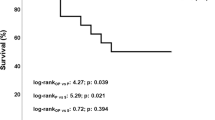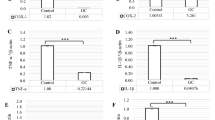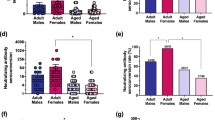Abstract
THE reticulo-endothelial system plays a predominant part in the defence of the body against infection. We have previously shown that stimulation of the reticulo-endothelial system leads to raised body defence (indicated by increased phagocytic activity, accelerated antibody production, raised serum gamma globulin and increased protection of experimental animals against virulent infections), and that the strongest reticulo-endothelial stimulants are the oestrogens1,2. We have also shown that the action of oestrogen on the reticulo-endothelial system is independent of its action on the reproductive tract, although these two biological activities are contained in the same molecule3. We have also demonstrated that cyclical variations in reticulo-endothelial activity occur during the oestrous cycle and during pregnancy in the rat and the mouse1. These findings suggest that when protection against infection is required, general and local body defence is increased by raised blood oestrogen levels. We also found that reticulo-endothelial activity falls after ovariectomy in the mouse4. These results suggest that oestrogen, especially 17β-oestradiol, is the principal natural stimulant of body defence in both the male and the female—the latter having raised oestrogen levels when protection against infection is normally most needed.
This is a preview of subscription content, access via your institution
Access options
Subscribe to this journal
Receive 51 print issues and online access
$199.00 per year
only $3.90 per issue
Buy this article
- Purchase on Springer Link
- Instant access to full article PDF
Prices may be subject to local taxes which are calculated during checkout
Similar content being viewed by others
References
Nicol, T., Bilbey, D. J. L., Charles, L. M., Cordingley, J. L., and Vernon-Roberts, B., J. Endocrinol., 30, 277 (1964).
Nicol, T., Quantock, D. C., and Vernon-Roberts, B., Nature, 209, 1142 (1966).
Nicol, T., Vernon-Roberts, B., and Quantock, D. C., J. Endocrinol., 34, 377 (1966).
Nicol, T., and Vernon-Roberts, B., J. Reticulo-endothelial Soc., 2, 15 (1965).
Nicol, T., Vernon-Roberts, B., and Quantock, D. C., J. Endocrinol., 33, 365 (1965).
Young, P. A. (personal communication, 1961).
Bulbrook, R. D., Franks, L. M., and Greenwood, F. C., Acta Endocrinol., Copenh., 31, 481 (1959).
Bulbrook, R. D., and Greenwood, F. C., Brit. Med. J., i, 662 (1957).
Brit. Med. J., ii, 1487 (1963).
Author information
Authors and Affiliations
Rights and permissions
About this article
Cite this article
NICOL, T., VERNON-ROBERTS, B. & QUANTOCK, D. Effect of Orchidectomy and Ovariectomy on Survival against Lethal Infections in Mice. Nature 211, 1091–1092 (1966). https://doi.org/10.1038/2111091a0
Issue Date:
DOI: https://doi.org/10.1038/2111091a0
This article is cited by
-
Professor Barrie Vernon-Roberts, AO, MD, BSc, PhD, FRCPath, FRCPA, FAOrthA (Hon), FRS.SA
Inflammopharmacology (2013)
Comments
By submitting a comment you agree to abide by our Terms and Community Guidelines. If you find something abusive or that does not comply with our terms or guidelines please flag it as inappropriate.



